#seed bug
Text

Bug of the Day
Swept this mating pair of seed bugs (Phlegyas abbreviatus) out of a meadow the other night. It was amusing to me that they took off together, still attached, the smaller male (pretty sure) being dragged along by the female.
44 notes
·
View notes
Text


Seed bug, genus Melanopleurus
14 notes
·
View notes
Text
A prime example of the western conifer seed bug :D

12 notes
·
View notes
Text

[PHOTO TAKEN: AUGUST 14TH, 2023 | Image ID: A photo of a red, black, and white white-crossed seed bug on a clear window within a door /End ID.]
#Lygaeidae#seed bug#hemiptera#true bugs#insects#insect#bugs#bug#bugblr#entomology#arthropods#invertebrates#inverts#photos#photo#Wasp House Sights
23 notes
·
View notes
Photo
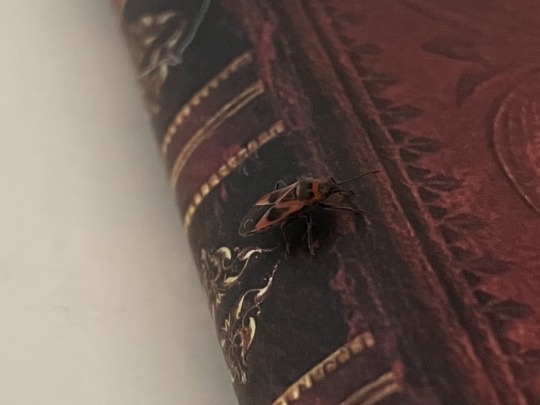
@impyyyy submitted: Found this mediterranean red bug on my desk today!
This doesn’t look like a Mediterranean red bug to me! Looks like one of the seed bugs in the family Lygaeidae, but I’d need a location to tell you which. Either way, though, it’s a very cute friend :)
78 notes
·
View notes
Photo

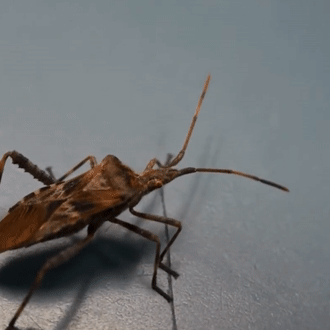


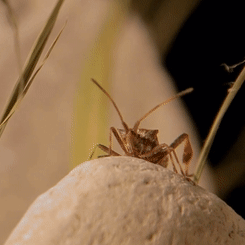
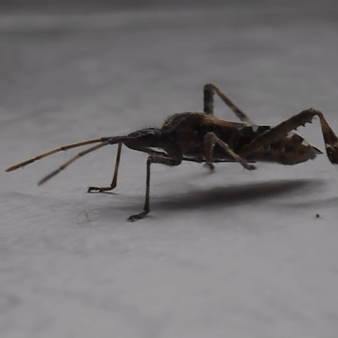
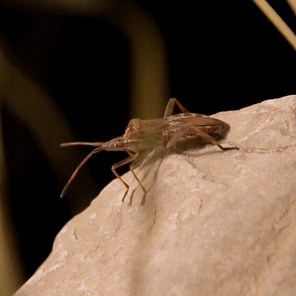

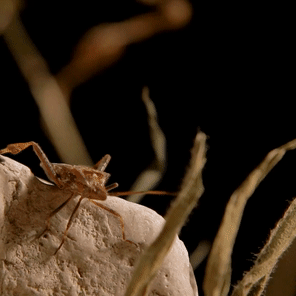
western conifer seed bug stimboard
X - X - X
24 notes
·
View notes
Photo
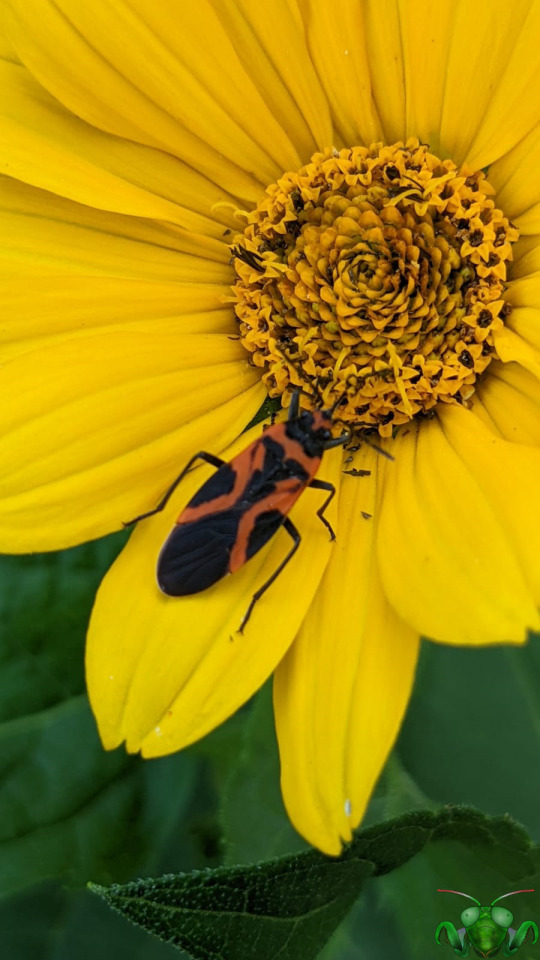
False Milkweed Bug - Lygaeus turcicus
This insect came from my father during one of his visits to the trails of Kleinburg. Wish I could’ve been there to see it personally, but I’m glad to have another new specie gracing the blog, even though this one seems very familiar. Like its relatives, this insect has many look-a-likes also featuring a red and black color scheme with a similar body shape and head. From earlier posts, I hope you are familiar with the look-a-likes as for this post I’ll only be talking about this insect’s fellow Seed Bugs since they are most relevant. Look at today’s specimen, it closely resembles the Small Milkweed Bug (Lygaeus kalmii - both insects are in the same genus) which can make identification at a glance misleading. By looking closely between examples of the two Seed Bugs, you’ll discover the differences that can help distinguish between them. Where ranges overlap, you’ll have a False Milkweed Bug if you can see a red “Y-shaped” marking on its head (L. kalmii lacks this), a double-triangle pattern running down its back (L. kalmii patterning is more heart-shaped) and no white spots on the darkest parts of the wings. Our specimen today has all these features, and with its red coloration and pattern, it definitely wouldn’t be confused with the Large Milkweed Bug, but what else can we use to identify this insect?
The features listed above should serve you well as the primary means to identify this Bug, but (believe it or not) we can actually use the flower its crawling on to confirm its identity too. The insect’s name says it all, believe or not! While they’re all Seed Bugs, the Small and Large Milkweed Bugs are commonly associated with milkweed as a primary source of food and many individuals can be found on or around milkweed plants. The nectar can provide nourishment and the seeds within the milkweed’s pods can be targeted later in the year, especially for the young nymphs. The False Milkweed Bug goes after a different plant for satisfy its need for seed...the plant that it currently stands on! While mistaken for its relatives by its appearance, you’ll mainly find the False Milkweed Bug lurking around or near the False Sunflower. The insect searches for seeds within this yellow flower to pierce with its rostrum and feed on, but never milkweed. It may also find a mate while it flies from flower to flower. It’s very amusing to me that a “false bug” feeds on a “false flower”, and it sounds too brilliant to be a coincidence. I have yet to truly undertake in-depth research of this insect, but the main question I have at the moment concerns whether or not the Bug is unpalatable since it doesn’t feed on milkweed? Does that mean this insect is a mimic of its milkweed eating relatives? I look forward to finding out!
Picture was taken on July 11, 2022 near Kleinburg village on a Google Pixel 4.
#jonny’s insect catalogue#ontario insect#seed bug#false milkweed bug#true bug#hemiptera#heteroptera#kleinburg#july2022#2022#entomology#nature#invertebrates
3 notes
·
View notes
Text
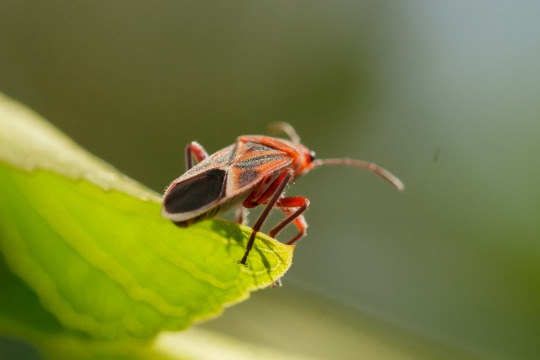

Bindweed Seedeating Bug (Graptostethus servus) on Chinese Celtis (Celtis Sinensis).
#ljsbugblog#bugblr#entomology#insects#hemiptera#heteroptera#true bugs#lygaeidae#seed bugs#graptostethus#seed-eating bugs#Graptostethus servus#macro
178 notes
·
View notes
Note
Been really into gardening, so what about Nikolai and König with a gardener s/o? Would they be interested in helping out, or have a specific favorite type of plant?
(I love love LOVE rambling about plants, they're so cool once you get to know them!! I blame my mom entirely since she has a green thumb)
(Also, do you have a fav kind of flower? I personally love hydrangeas)
Plants are really cool, though! Hydrangeas are very pretty, I think I've seen some here and there! I personally adore lisianthus, though! They're absolutely gorgeous! Now I can't help but wonder if I could grow some someday when I move out, haha!
Nikolai and König with a Gardener!S/O
Nikolai: I do believe that he has a garden somewhere near his house only he knows about, where he grows vegetables. He loves having his own little garden, just that little bit of space that no one can take away from him with which he can do just about whatever is nice. He especially likes tomatoes, they’re nutritious, healthy and very delicious, as well as easy to cook. Nikolai is a pretty good cook, so he knows how to utilize tomatoes to their full potential. He has tried to grow flowers as well, though. He’s made some good success with sunflowers, in fact he still has some in his secret garden. So he absolutely knows how to take care of a garden, he finds it relaxing even and would love to help you out a bit, if you let him. Do let him plant some plants of his own, though, he loves watching them grow. Although he’s never been able to do so, he’d love to cultivate some melons at some point as well. Watermelons, cantaloupes, honey melons, he’d love to eat his own ones someday as well, especially with you. He thinks it’s so cool that you’re a gardener because, in another life where he wasn’t a soldier and or leader of a PMC, he, too, would be a gardener. Has always dreamed of having a garden with you and would love to plant some trees as well. Apple trees, cherry trees, maybe even some orange trees, as long as he gets some delicious fruit out of it, he’s down. Besides, what’s more domestic than working at your shared garden together? He’ll even plant some flowers as well. He can’t particularly surprise you well with them, but he can look at your surprised face when they first start sprouting. While he won’t pluck or cut them unless he needs to, he will cherish the moments he gets to spend with you and your shared plants. And if you’re the type of person to name your plants then I can assure you he remembers each and every single name.
König: He’s never really been into gardening. He had a small succulent as a kid once so he had something to take care of that would help him with feeling down, but it didn’t survive very long. He loved the little plant a little too much and gave it too much water every day. To this day he feels guilty about it. He named it “Luisa”. Ever since then he’s not very confident in his plant keeping abilities, thinking he has the worst green thumb imaginable. He would love to help you, don’t get me wrong, but he’s afraid of killing your plants and making you mad about it. No, he’d much rather watch you and encourage you with your endeavors. He’ll buy fertilizer, if needed, or some new seeds or saplings if you want some, but he won’t really do much with your plants, aside from moving them to the sunlight if you want him to. Although, it should be added that he could still learn how to take good care of a plant. With some guidance, and another small succulent that’s hard to kill, it’s not too late. Just show him the ropes, tell him what to do and he’ll do it. He might get nervous about having overdone it again from time to time, and will come up to you, the succulent tiny in his hands, asking you if his plant will make it. Reassure him and give him some good tips, he’ll appreciate it more than you’ll ever know. König feels very accomplished when the plant has survived over two months. As time goes on, he’ll grow more comfortable with plants and ask you if he could maybe help you water some more plants. He may still need to get a feeling for it all, but he’s very eager to help you. Again, this is all very domestic for him, so he quite likes it. Just watering some plants with you, harvesting some parsley, maybe picking some apples from the tree. He can get most fruits from the tree due to his height as well, which is great. König’s more into the practical side of gardening, so he prefers fruit and vegetables over flowers. His favorite plant would be a pumpkin, but only because he loves pumpkin seed oil.
#cod#cod x reader#cod nikolai#cod nikolai x reader#könig#konig#könig x reader#konig x reader#pumpkin seed oil is literally the best thing out there it goes so well with salad#I never eat my salads without some pumpkin seed oil#been eating it ever since I was a child and my mother to this day buys it whenever she can. salads are so good#therefore König also adores pumpkin seed oil because I said so#besides he's Austrian so it makes a lot of sense as well#plants are so so cool#I had two succulents once but my heart broke when I had to throw them out due to mosquitos#my entire room was filled to the brim with mosquitos it was absolutely disgusting#my two succulents were named Eden and Arya#and yes I did name one after an OC of mine and the other one after a VN character#I miss having plants it was so very cool but I fear the day I have a million bugs in my room again#I'm not at all a big fan of bugs I think they should leave me alone and stay as far away from me as possible#also I really like lisianthus because of a song. otherwise I wouldn't even know they exist haha#nine point eight by mili is very depressing but also really good. it names a lot of flowers#however don't listen to it if you don't fare well with suicide themes since that song's very heavy on those
42 notes
·
View notes
Text

Compiled this lil piece from solar filter I used during the eclipse and plants I grabbed from my friend's parents' yard in Arkansas (they have those cool helicopter seeds we don't have around Florida)! Included Jupiter and Venus symbols on two handheld filters since those planets were very visible during the eclipse, and bits of a cyanotype I did the day before! So all the components are directly related to the eclipse/general area I viewed it from :-)
#my art#i don't actually usually post my actual art here bksndjd but I kinda busted my butt and thought this was a very cool thing I did !#text#eclipse#solar eclipse#the truth is out there#all of the inorganic materials are solar filter or cyanotype#(aside from glue lol)#the silver is the side that faces the sun - the black is what you look through!#and all the organic materials were from near eclipse path#i like the little red leaves which I grabbed bc I thought they looked cool but they ended up being neat as prominences too lol#anyway. inspo'd by exquisite creatures exhibit in crystal bridges AR bc the guy there uses bugs n plants n such in his art#also fuck leaves for use in art those little bitches fr . very annoying !#probs my fault in part bc I'm too impatient to book dry them tho... I rly wanted to get this Out Of Me y'know?#i put that dandelion together by hand lmaooo#like reattached the seeds to the head . so I could glue em on somewhat and keep em kinda more in place#than how they were attached naturally
15 notes
·
View notes
Photo

#insect#bug#seed head#green#photographers on tumblr#textless#amadee ricketts#shield bug#seeds#seed fluff#texture#in the yard#garden#arizona#fall#autumn#october
141 notes
·
View notes
Text

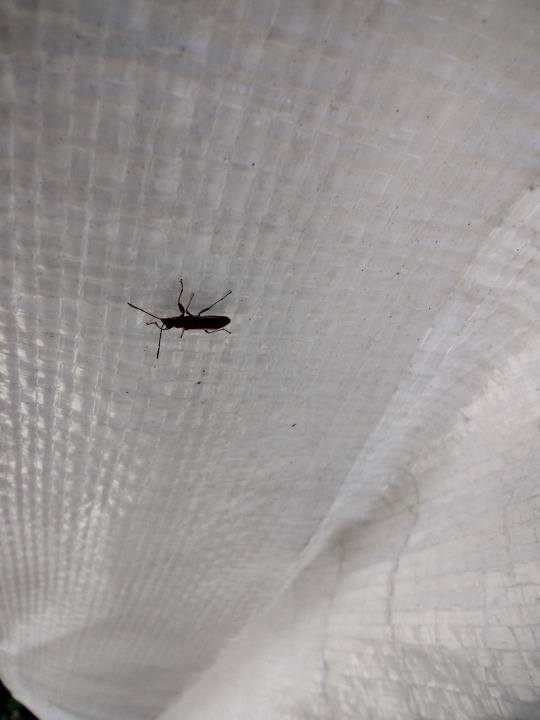
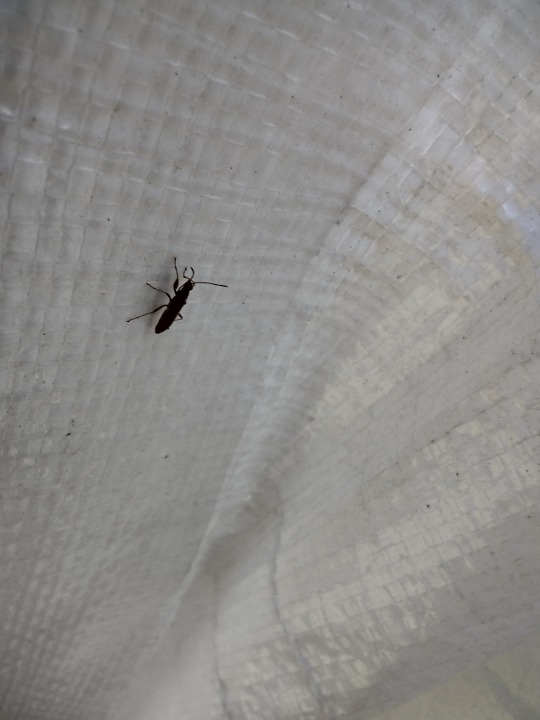
[PHOTOS TAKEN: MARCH 29TH, 2024 | Image IDs: Three photos of a black dirt-colored seed bug walking along a white woven tarp /End IDs.]
#seed bug#Dirt-colored seed bug#Rhyparochromidae#hemiptera#true bugs#true bug#insects#insect#bug#bugs#bugblr#arthropods#entomology#invertebrates#Inverts#photos#photo#Wasp House Sights
8 notes
·
View notes
Photo

@hedgewitchnecromancer submitted: Found this beautiful guy recently in central Maine and wanted to share!
A perfect fella. 10/10. It is a western conifer seed bug, which is a type of leaf-footed bug :)
141 notes
·
View notes
Text
me when they’re like “there used to be 10 golems on the third level but now there’s only 3”: yeah that’s gonna be come up again later
#dungeon meshi#specific numbers? I’m taking Note#other things I’m taking note of: winged lion motif everywhere#that whole thing with the paintings For Sure#the way things are more vital (yummier) deeper down and lose thay when at the surface#Laois is correct to ask if seeds from the dungeon grow at the surface#and why does the armor mollusk react to treasure bugs
14 notes
·
View notes
Photo

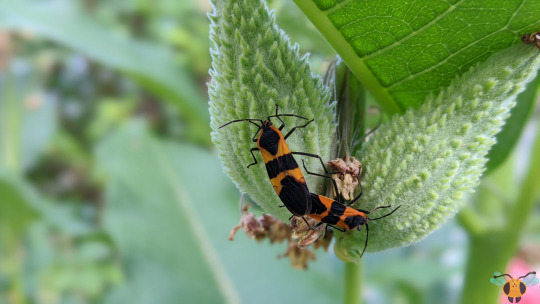

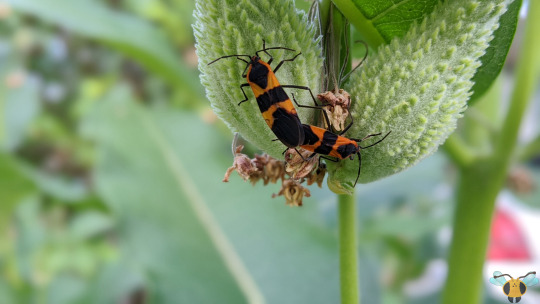
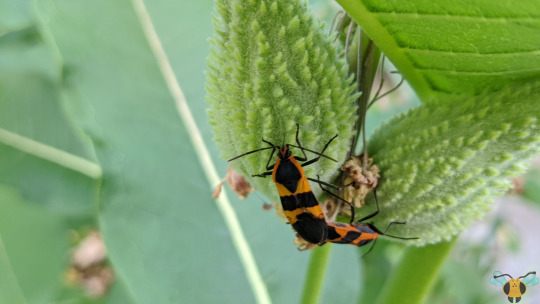

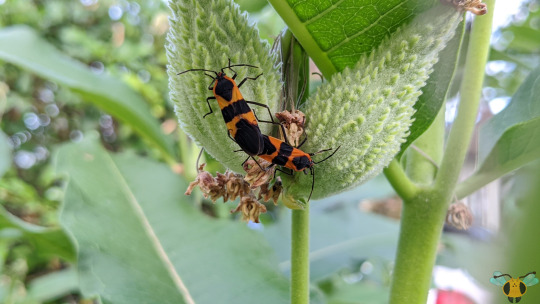

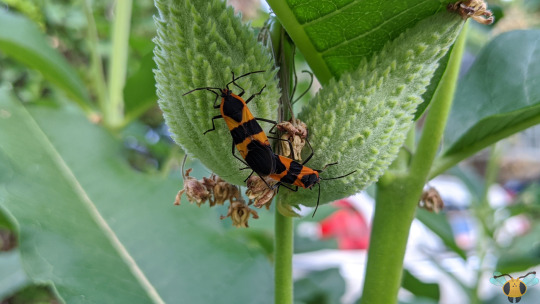
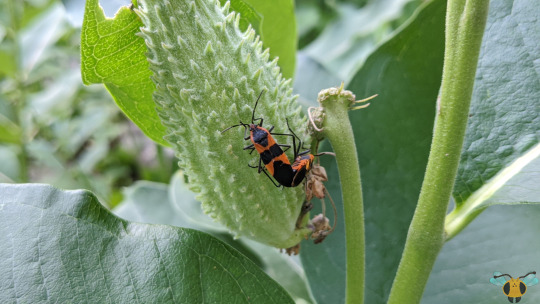
Large Milkweed Bug - Oncopeltus fasciatus
Though orange-colored rather than red and they lack the “heart-shaped” patterns that their Smaller relatives have, I wish I’d have remembered this set of images for a Valentines post. Insect mating pairs always make for a fun (and fitting) showcase for the day of loving, and yet somehow these were missed. Looking at them more closely, the images I’ve gathered here are very similar to each other, so maybe the set isn’t so dynamic. Hopefully the picture of the nymphs that various instars (Picture 6) can break up the monotony and provide insight into the life cycle of this brightly-colored Seed Bug. The deep red of the youngest nymphs gives way to orange in later instars and a black pattern gradually begins to appear. The latter will be kept throughout the life of the adult and the red color manifests itself in another place: the face. It’s genuinely amazing how the colors of the insect are organized and distributed as one instar becomes another and milkweed juices and seeds are consumed. Like the more familiar and more glamorous milkweed lover, the Monarch Butterfly, their vibrant orange coloration is a result of their diet and warns would-be predators that they are distasteful and shouldn’t be eaten.
Come to think of it, their color scheme is very similar, so there could be many common factors in milkweed toxin integration to their bodies despite the different parts of the plant that are consumed (leaves vs. seeds and plant juices). Having said that, unlike Monarch Caterpillars which can start feeding immediately after hatching, the Milkweed Bug nymphs will have to work harder to get the best nutrition they can. Upon hatching, their rostrums are too short to pierce through the milkweed pods to feast on the seeds within. Furthermore, if they hatch too early they’ll need to rely on the milkweed’s buds for nutrition, and while suitable it’s not as fulfilling as the seeds are. As such, these seed feeders will look for any opportunity to breach the seed pods for the prizes inside. If a pod is already open, so much the better, but if not there are thin spots and weak points that can be jabbed. If the nymphs can survive to instar 4, no more feeding problems will be had, and adults can feed however they please.
Pictures were taken on July 18 and October 24, 2020 with a Google Pixel 4. For more information, I recommend checking out this article by Carol Pearson Ralph on how Large Milkweed Bugs and milkweed plants interact with each other and regulate each other to a degree.
#jonny’s insect catalogue#ontario insect#large milkweed bug#seed bug#hemiptera#heteroptera#true bug#insect#mating pair#toronto#july2020#october2020#2020#entomology#nature#invertebrates
1 note
·
View note
Text
Sj2 au where bugs didn't come back for MONTHS
#I'm just thinking of all the baffy angst possiblities tbh#just daffy initially thinking bugs will come back sooner or later and it's only a matter of a few days#And then days pass on and the paranoia seeds are being sown in his mind#as more and more time goes on its dawning on him that there *is* a possibility bugs might never come back#the first time he's having doubts he mentally (or physically) slaps himself in the face#because there's NO possible WAY that bugs can just vanish like that right??!!#the next time he starts feeling bad because he's looking around and bugs. is. not. anywhere.#he hesitantly will go up to the poster stack pinned to that tree (just because he wanted and absolutely no other reason at ALL)#and he'll start pulling off the posters bc OBVIOUSLY he's just messing around and being lOoneY and it's definitely not a silent plea#for bugs to come back#A month and a half passes and he starts PANICKING#Too much time has passed with not much happening and the Burrow's still empty and the furniture's collecting dust#and there are cobwebs in the corners#and it's all too much because bugs loves cleaning but he's not here and his burrow is clearly as affected as daffy is#because daff's pretty sure cobwebs are forming in his heart too#I could write paragraphs about this it's so interesting#I'm so unwella about them#bugs bunny#bugs x daffy#baffy#daffy duck
16 notes
·
View notes